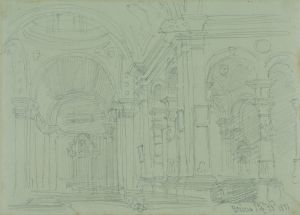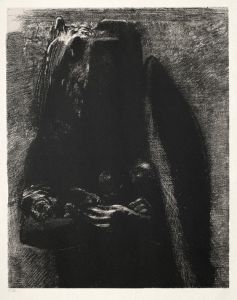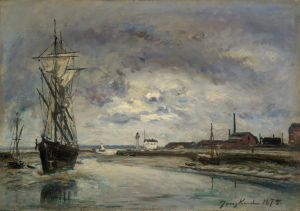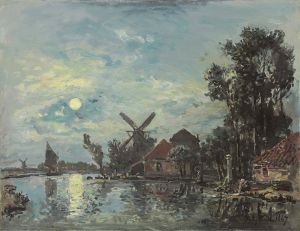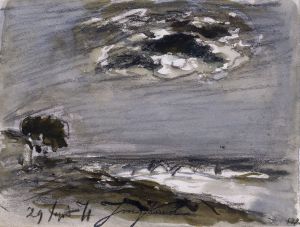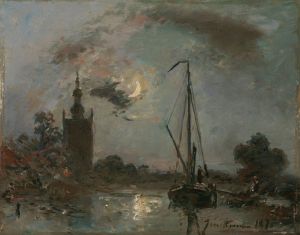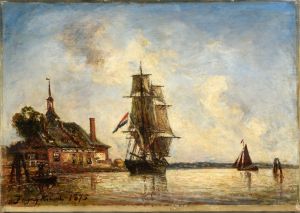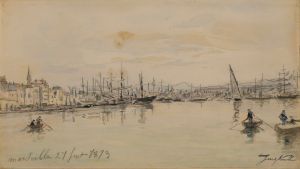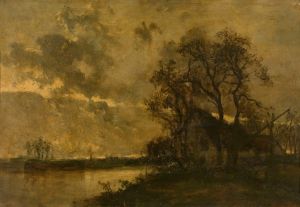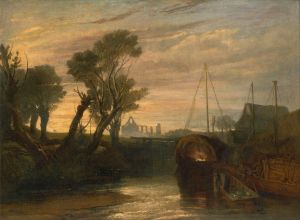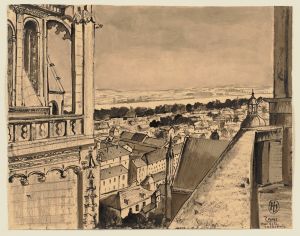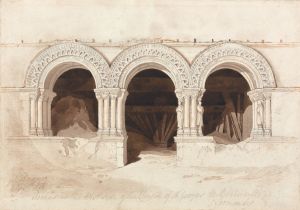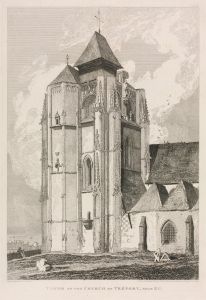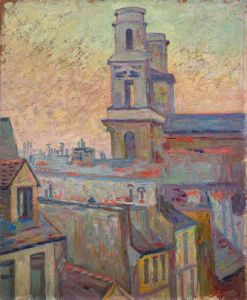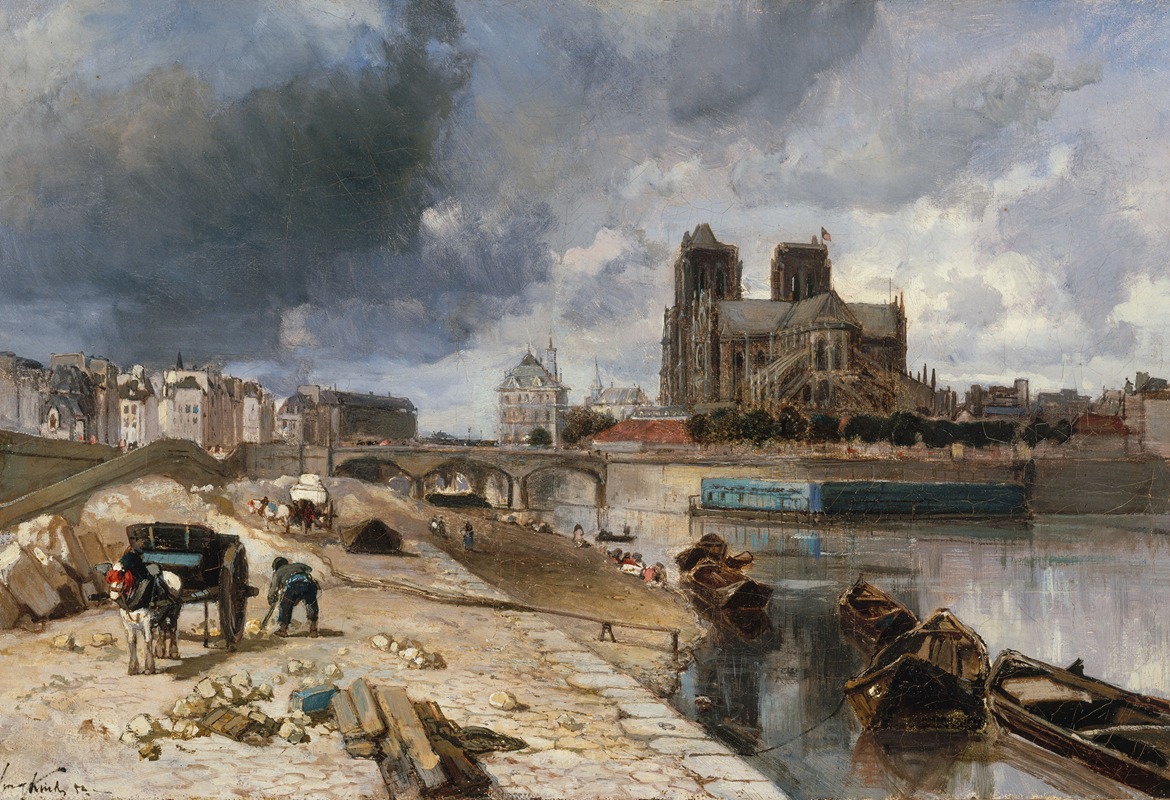
Notre-Dame vue du quai de la Tournelle
A hand-painted replica of Johan Barthold Jongkind’s masterpiece Notre-Dame vue du quai de la Tournelle, meticulously crafted by professional artists to capture the true essence of the original. Each piece is created with museum-quality canvas and rare mineral pigments, carefully painted by experienced artists with delicate brushstrokes and rich, layered colors to perfectly recreate the texture of the original artwork. Unlike machine-printed reproductions, this hand-painted version brings the painting to life, infused with the artist’s emotions and skill in every stroke. Whether for personal collection or home decoration, it instantly elevates the artistic atmosphere of any space.
"Notre-Dame vue du quai de la Tournelle" is a painting by the Dutch artist Johan Barthold Jongkind, renowned for his influence on the Impressionist movement. Jongkind, born in 1819 in the Netherlands, was a pivotal figure in the transition from traditional landscape painting to the more modern approaches that characterized Impressionism. His works are celebrated for their innovative use of light and color, which would later inspire artists such as Claude Monet.
This particular painting, "Notre-Dame vue du quai de la Tournelle," depicts the iconic Notre-Dame Cathedral in Paris as seen from the Quai de la Tournelle, a location along the Seine River. The painting captures the essence of Parisian life and architecture in the 19th century, showcasing Jongkind's skill in rendering atmospheric effects and his keen eye for urban landscapes.
Jongkind moved to Paris in the mid-19th century, where he became acquainted with several artists who would later form the core of the Impressionist movement. His work during this period often focused on the cityscapes and river scenes of Paris, which he painted with a distinctive style that emphasized the play of light on water and the atmospheric conditions of the city.
In "Notre-Dame vue du quai de la Tournelle," Jongkind employs a delicate palette and loose brushwork to convey the scene's transient effects of light and shadow. The painting is characterized by its subtle tonal variations and the artist's ability to capture the reflections on the water, a technique that would become a hallmark of Impressionist painting. The composition is balanced, with the cathedral's imposing structure offset by the gentle flow of the Seine and the bustling activity along the quay.
Jongkind's approach to painting was innovative for his time. He often painted en plein air, or outdoors, which allowed him to observe and capture the changing effects of light and weather directly from nature. This method was relatively uncommon at the time but would later become a defining characteristic of Impressionist painting.
The painting not only reflects Jongkind's technical prowess but also his deep appreciation for the city of Paris. His works often convey a sense of tranquility and harmony, capturing the beauty of everyday scenes with a poetic sensibility. "Notre-Dame vue du quai de la Tournelle" is a testament to Jongkind's ability to transform a simple view of the city into a work of art that resonates with viewers.
Jongkind's influence on the Impressionists cannot be overstated. His innovative techniques and his focus on capturing the ephemeral qualities of light and atmosphere paved the way for the next generation of artists. Although he did not achieve the same level of fame as some of his contemporaries during his lifetime, his contributions to the development of modern art are now widely recognized.
Today, "Notre-Dame vue du quai de la Tournelle" is appreciated not only for its aesthetic qualities but also for its historical significance. It stands as a testament to Jongkind's role in the evolution of landscape painting and his enduring impact on the art world.





